HVAC systems play a crucial role in regulating air environments within factories, offering a variety of services from design to installation and maintenance.
Introduction to HVAC Systems
HVAC systems (Heating, Ventilation, Air Conditioning) provide comprehensive solutions to control temperature, humidity, and air quality in factories and other types of buildings. Common applications include industrial production, commercial buildings like malls, and production of pharmaceuticals and food. These systems are vital not only for maintaining a comfortable working environment but also ensuring efficient and sustainable production operations.
The acronym HVAC stands for Heating, Ventilation, and Air Conditioning. It is a critical technical component in modern buildings, ensuring a comfortable, healthy, and safe living and working environment.
Main Functions of HVAC Systems
- Heating: Supplies warmth to maintain a comfortable room temperature during cold weather.
- Ventilation: Brings in fresh air and removes polluted air from interior spaces.
- Air Conditioning: Regulates temperature, humidity, and filters the air, creating a cool and pleasant environment.
Structure and Major Components
- Heat Exchanger: Transfers temperature between the external environment and indoor air.
- Cooling Equipment: Compressors and condensers that cool the air.
- Heating Devices: Provides heat when required.
- Fans and Ducts: Circulate air to required areas.
- Filtration Systems: Includes HEPA filters to remove dust and bacteria to ensure air quality.
- Pumps, Control Valves: Circulate hot/cold water and adjust air, steam flow as needed.
Operating Principles
- Fresh Air Intake: Air from outside is drawn in through intake units and Air Handling Units (AHUs).
- Air Quality Adjustment: Air is modified for humidity and temperature and filtered through HEPA filters to remove dust and bacteria.
- Air Recirculation: About 90% of air is recirculated, 10% is expelled outward.
- Air Flow Cycle:
- Supply Air: Conditioned and filtered air supply.
- Return Air: Recaptured air from rooms for reuse.
- Exhaust Air: Polluted air expelled outside.
HVAC System Types
- Installation Position: Central or decentralized.
- Cooling and Heating Methods: Utilizing water, steam, or gas.
- System Structure: Air duct systems, chilled water systems.
Applications of HVAC Systems
HVAC systems are widely used not only in residential constructions but also in commercial buildings, shopping centers, medical facilities, and production plants where precise temperature and humidity control is required.
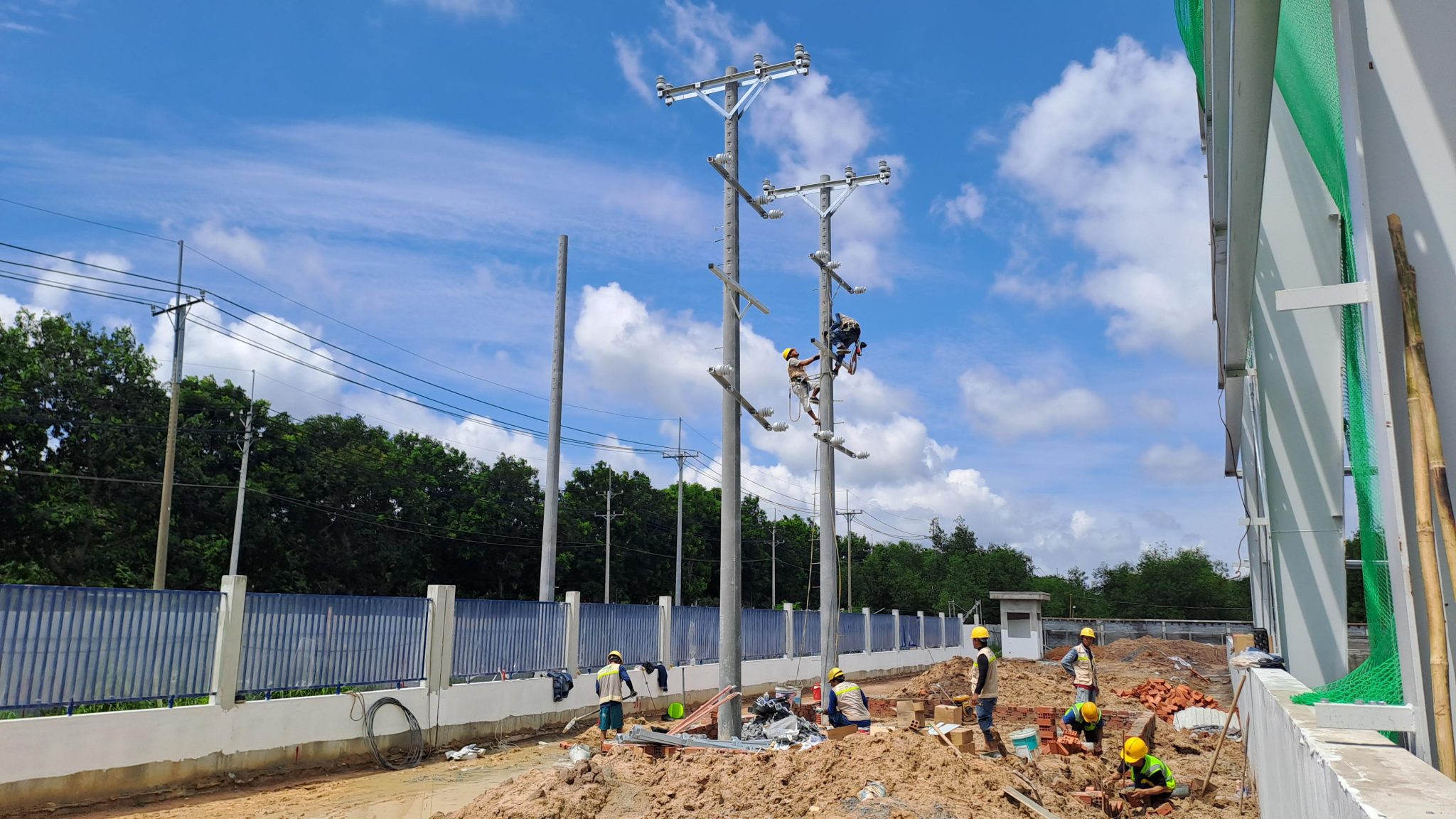
Main Components of an HVAC System
HVAC systems comprise core components such as heating, ventilation, and air conditioning systems. They include: Heating Systems with boilers and water heaters; Ventilation Systems ensuring air circulation and pollutant removal; Air Conditioning Systems with space cooling functions via air-handling units like AHUs and air filters. Automatic control equipment is used to efficiently manage atmospheric parameters and enhance energy management.
In an HVAC system, three main components provide effective operations: heating systems, ventilation systems, and air conditioning units. Each component plays a vital role in maintaining ideal air conditions for buildings.
- Heating Systems: Provide heating to living spaces during cold days, including heaters, water heaters, boilers, and heat pumps. These devices can operate on electricity, gas, oil, or coal, delivering heat through hot water pipes.
- Ventilation Systems: The primary function of ventilation systems is to circulate air, eliminate pollutants and toxic gases while also adjusting humidity. Key equipment includes fans, air supply ducts, and air filters that ensure the removal of dust and contaminants.
- Air Conditioning Units: Ensures cooling of spaces by removing hot air and bringing in cool air. Typical devices include Air Handling Units, compressors, coils, heat exchangers, and climate control units using refrigerants for temperature regulation.
Beyond the main components, HVAC systems have other crucial supporting equipment such as:
- Compressors: Play a key role in circulating refrigerants in the cooling cycle, acting as the “heart” of the cooling system.
- Air Filters: Ensure the best air quality by removing dust and fine particles.
- Moisture Management Equipment: Humidifiers or dehumidifiers are included to adjust air humidity, adapting to environmental and usage needs.
- Ductwork and Air Outlets: Efficiently distribute air across HVAC system spaces.
By seamlessly coordinating HVAC components, this system not only ensures desired temperature and humidity conditions but also enhances air quality, playing a crucial role in protecting user health and improving energy use efficiency.

Operating Principles of an HVAC System
HVAC systems operate based on principles of heat transfer, insulation, thermodynamics, and fluid mechanics. Devices within the system, from heating, ventilation, to air conditioning, collaborate to maintain favorable air conditions. The interaction between these components allows the system to adjust temperature, humidity, and air pressure, providing a safe and comfortable working environment for all production and living activities at the factory.
Basic Operations of an HVAC System
HVAC systems play a vital role in controlling environmental conditions in places like buildings, factories, and clean rooms. HVAC system operations include air circulation, thermal processing, and air filtering to create a favorable and safe environment.
Air Flow within the System
HVAC systems implement three main air streams to optimize air use and management:
-
Fresh Air: Air drawn from outside, processed for dust and adjustments in parameters like temperature and humidity before being introduced indoors.
-
Return Air: The majority about 80-90% of internal air is reclaimed for processing, conserving energy, and maintaining stable environmental indices.
-
Exhaust Air: A portion of air about 10-20% is expelled outside to maintain cleanness and suitable oxygen concentration.
Air Handling Steps
HVAC systems operate through a detailed process for air handling as follows:
- Fresh Air Intake and Preliminary Processing: Outdoor air is filtered for large dust particles before entering the system.
- Temperature and Humidity Adjustment: Using heat exchangers, air is stabilized to requirements.
- Air Purification: Specialized filters are used to meet requested cleanliness standards.
- Air Distribution: Air is delivered and distributed through air ducts.
- Air Recovery and Reuse: Recycle most of the air to save energy.
- Air Exhaust: Discharge some vented air to balance pressure and maintain oxygen levels.
Main Components of the System
- AHU (Air Handling Unit): Central in air processing including filtering and temperature, humidity adjustments.
- Heat Exchanger: Heat/cool coils help in adjusting air temperature as desired.
- Air Filtration System: Ensures optimal air quality before entering usage areas.
- Fans, Air Ducts, and Air Outlets: Ensure effective air circulation within spaces.
- Automatic Control Systems: Control parameters like temperature, humidity to maintain energy savings.
Applications and Physical Basis
HVAC is widely applied in industries, healthcare, and commercial and residential buildings due to its precise environmental control capability based on physical principles like thermodynamics and fluid dynamics.
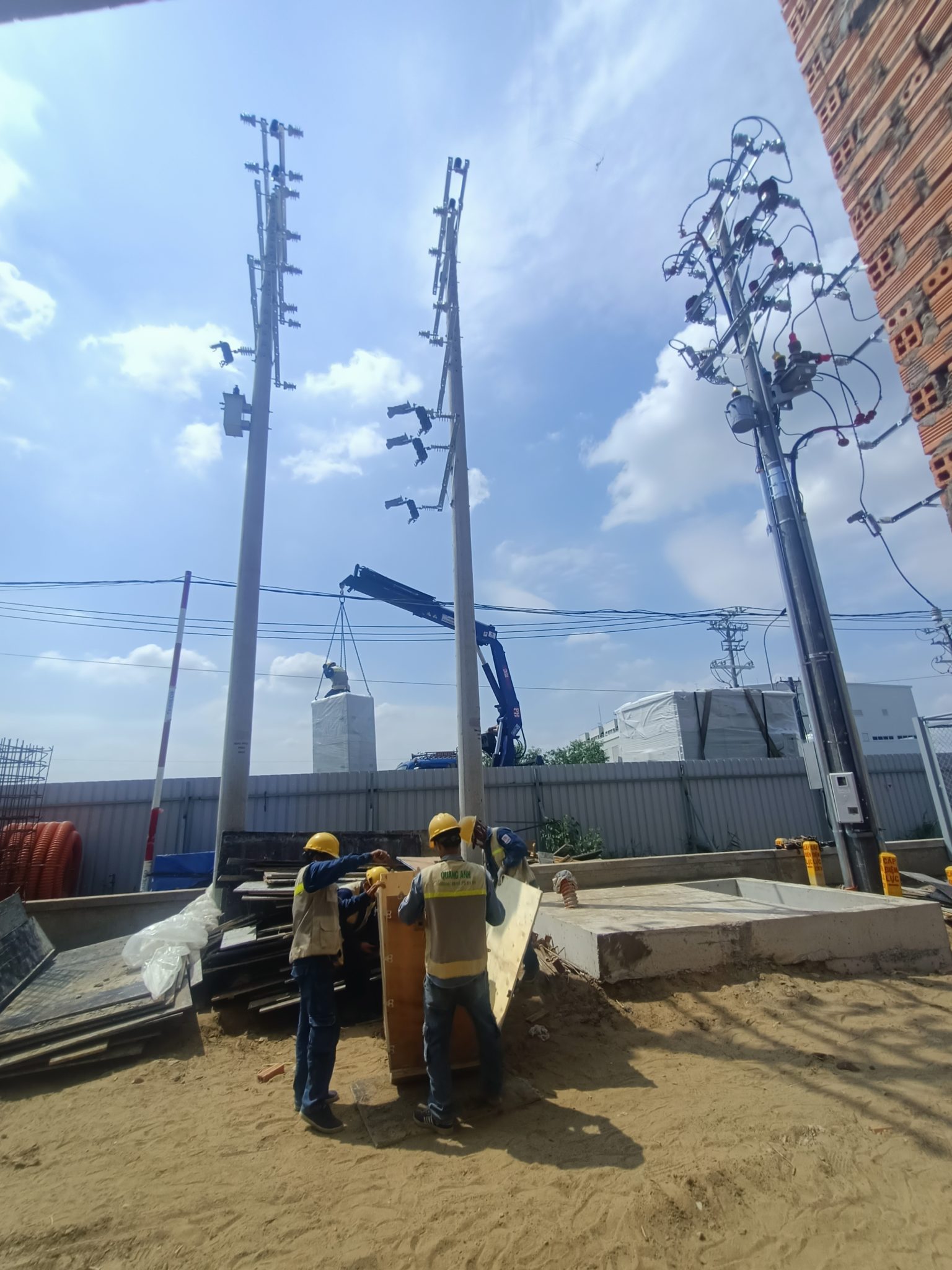
HVAC System Installation Services
HVAC system installation services for factories include designing and installing systems tailored to specific scales. The service continues by integrating smart technology to optimize performance and energy savings. Additionally, regular operation and maintenance ensure stable system running, prolong lifespan, and maintain operational efficiency, minimizing unexpected issues.
When talking about HVAC System Installation Services, contractors play a crucial role in guaranteeing air quality and temperature in constructions. This field demands high expertise from installation, operation to system maintenance.
Main Components of HVAC Systems
- Heating: Furnaces, water heaters, and hot water pipes are common solutions to provide heat in cold weather conditions.
- Ventilation: Ventilation systems ensure air circulation, minimizing harmful gases and adjusting humidity within spaces.
- Air Conditioning: Air conditioning units perform cooling and air circulation functions, enhancing living and working environments.
Operating Principles
HVAC Systems operate on principles of heat transfer, thermodynamics, and fluid mechanics. This ensures temperature, humidity, and air quality remain at optimal levels, while also safeguarding user health and safety.
Scope of Application
HVAC System Installation Services are present in various types of constructions:
- Residential: Such as townhouses, villas, and hospitals.
- Commercial: Shopping centers, hotels, and restaurants.
- Industrial: Factories, cold storage, and clean rooms.
- Specialized facilities: Labs and servers due to exacting requirements for environmental conditions.
Installation Process
The installation process includes the following steps:
- Survey & Design: Assess actual conditions and choose appropriate equipment.
- Plan & Estimate: Optimize both financially and technically.
- Supply materials and equipment: Commit to quality equipment such as Mitsubishi, ABB.
- Installation Execution: Carry out on schedule and ensure safety.
- Trial Operation: Adjustments to achieve optimal performance.
- Regular HVAC Maintenance: Monitor, maintain stable operation.
Trends and Standards
Today’s HVAC System Installation Services particularly focus on:
- Energy Saving HVAC: Use inverter technology to minimize power consumption.
- Environmentally Friendly: Utilize high-standard refrigerants.
- IoT Integration in HVAC: For remote monitoring and automatic fault alerts.
- Compliance with international standards: Like ASHRAE and ISO, along with Vietnamese regulations.
Benefits and Challenges
HVAC System Installation Services provide many advantages, such as enhancing air quality and reducing operational costs. However, challenges exist regarding investment costs and maintenance requirements.
This field requires highly specialized contractors who understand technical standards to ensure performance and safety for projects.
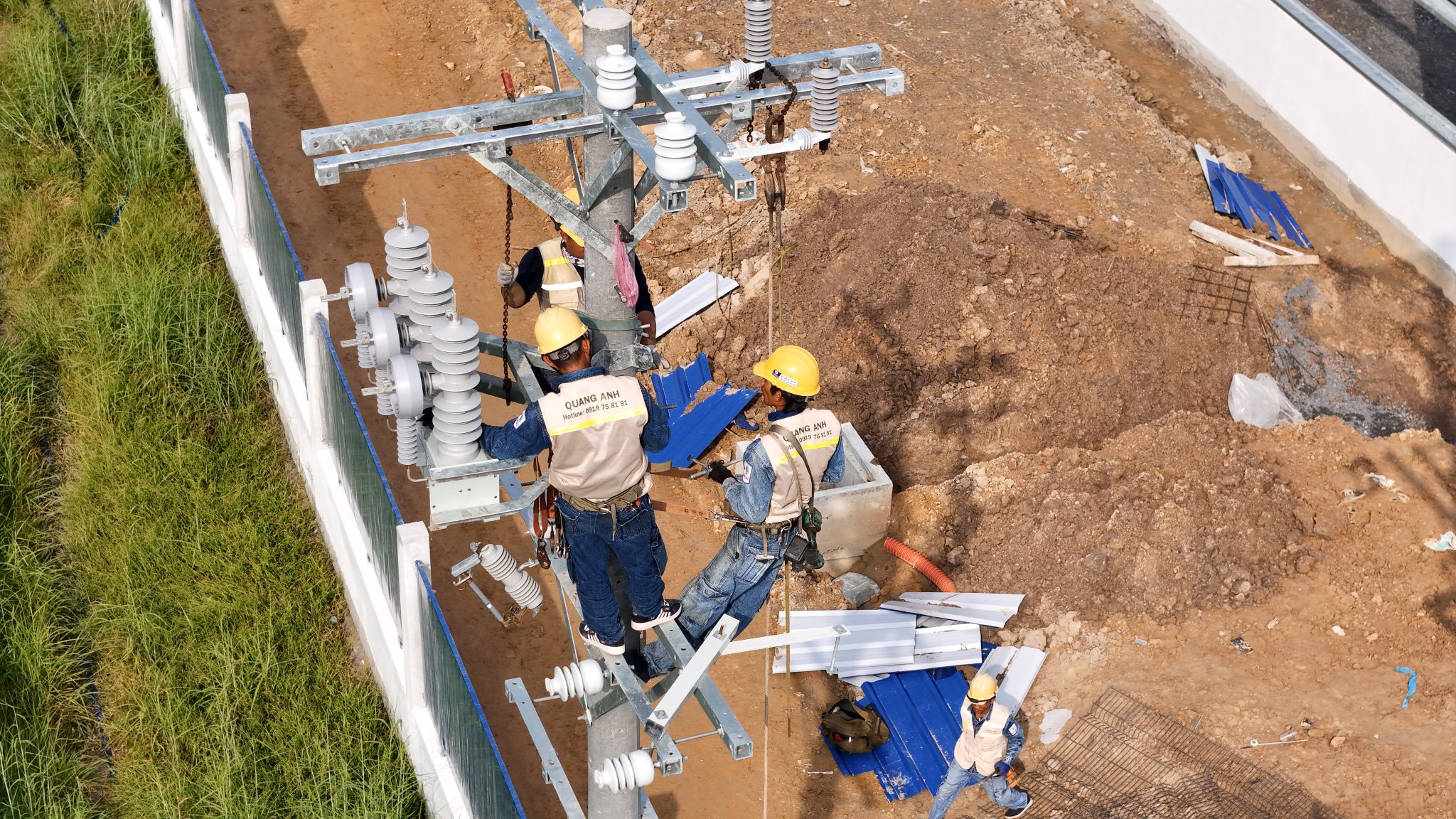
Features and Benefits of HVAC Systems
HVAC systems offer numerous benefits to factories, such as temperature and humidity control, ensuring a pleasant working environment. Moreover, the ability to remove dust and harmful substances helps improve air quality, which is extremely important in pharmaceutical and food production. Systems are also designed to conserve energy, reducing overall operational costs without compromising performance.
HVAC (Heating, Ventilation, Air Conditioning) systems offer a blended solution for temperature control, ventilation, and air conditioning. These systems are crafted to deliver optimal comfort for living and working spaces, providing a comfortable and safe environment for users.
Definition and Classification HVAC systems are widely applied across residential, industrial, commercial, and healthcare constructions.
Feature Analysis HVAC control automatically maintains stable indoor temperatures, regardless of weather changes. In addition to temperature regulation, the system also manages humidity. The function of humidity management reduces the growth of mold and bacteria, protecting health and architectural longevity.
The capability to enhance indoor air quality (IAQ) is noteworthy, as air filtering and circulation systems eliminate impurities such as dust and harmful microorganisms, elevating indoor air quality and reducing respiratory health risks.
Modern systems with smart control and energy-efficient HVAC features integrate smart control technology along with sensors, optimizing energy performance. The system operates only in necessary areas, lowering operational costs and protecting the environment.
Basic Structure HVAC systems consist of components:
- Heating Systems: Like heaters, boilers, heat pumps.
- Cooling Systems: Air conditioners, cooling devices.
- Ventilation Systems: Fans, air handling units, air filters.
- Control Systems: Central control units, sensors, monitoring software.
Detailed Benefits HVAC systems not only create a comfortable environment year-round but also protect health through air purification. Particularly crucial in environments like hospitals and schools. These systems extend the lifespan of buildings and equipment, as humidity management effectively prevents mold and corrosion.
The energy-saving capability of HVAC significantly reduces operational costs, especially in large constructions. This system aligns with sustainable development trends, reducing greenhouse gas emissions.
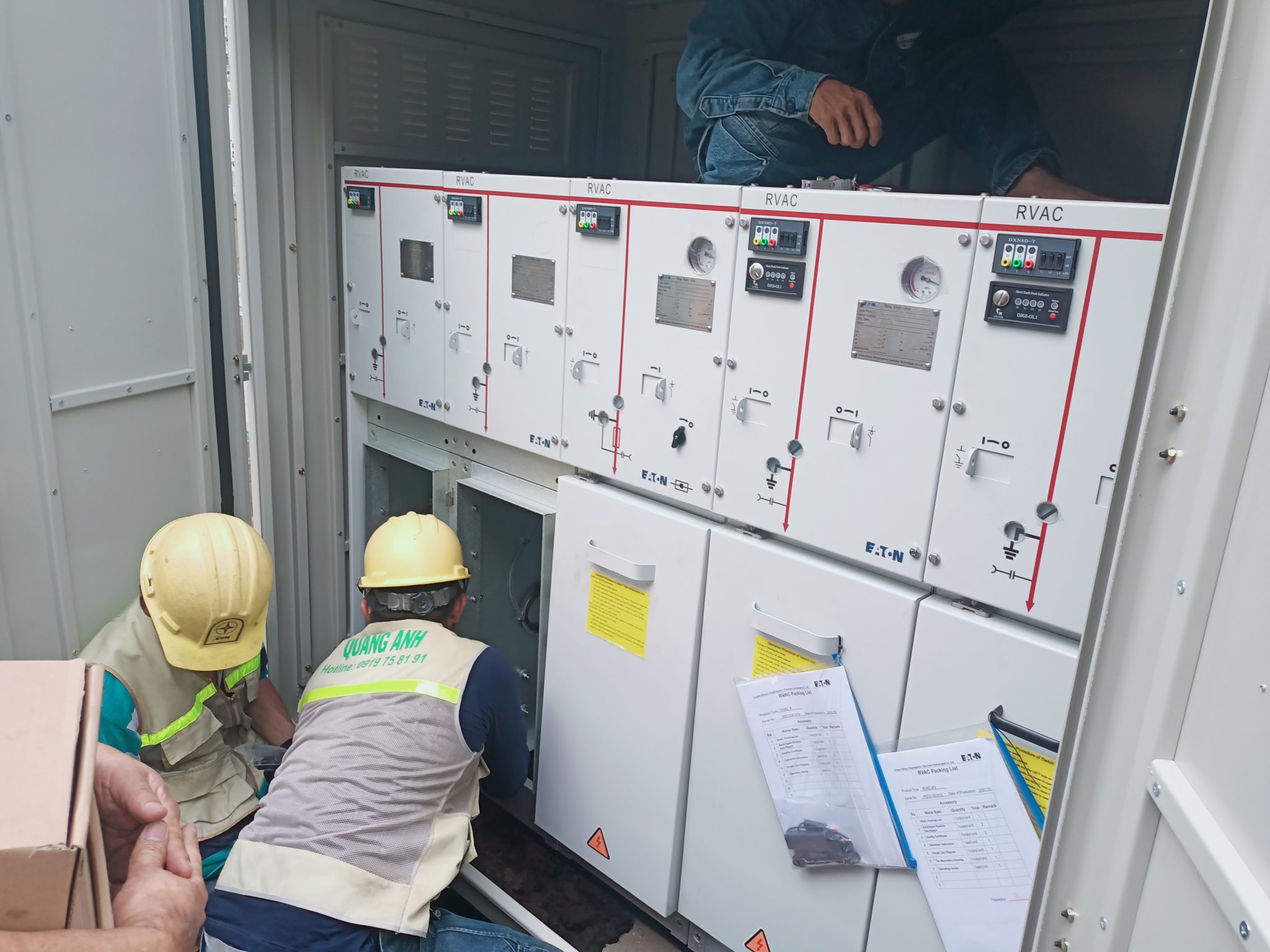
Applications of HVAC Systems in Factories
HVAC systems are vital in maintaining a clean and safe manufacturing environment, suitable for stringent pharmaceutical and food industry requirements. Moreover, they create ideal working conditions for employees, boosting productivity and protecting health. For factories both large and small, this system is an optimal solution for all air needs.
In factories, HVAC systems play an essential role in maintaining a quality work environment. The primary task of the system is to regulate environmental temperature, ensuring employee health and efficiency.
- Temperature Control: HVAC systems in factories adjust temperature to match production characteristics and worker health, preventing overheating or excessive cooling, particularly crucial in production areas or material storage warehouses.
- Industrial Clean Air Provision: Through fresh air supply and multi-level air filters, it removes polluted air, dirt, odors, and harmful pathogens.
- Factory Humidity Control: Industrial ventilation systems help regulate and maintain ideal humidity, reducing the likelihood of machinery and material damage due to low or high humidity, and limiting the growth of bacteria and mold.
- Energy Saving HVAC: By optimizing the performance of air conditioning devices and ventilation systems, factory HVAC systems can save significant energy, reducing costs and enhancing production efficiency.
- Reducing Noise and Vibration: The integration of modern technologies helps minimize noise and vibration from HVAC equipment, ensuring a quiet and stable working environment.
Applications of HVAC in specialized manufacturing environments like clean rooms, cold storage, and production lines sensitive to temperature and humidity are indispensable. It not only ensures product quality but also enhances the health and comfort of workers. Thus, HVAC systems in factories not only improve working conditions but also make a significant contribution to production quality and productivity.
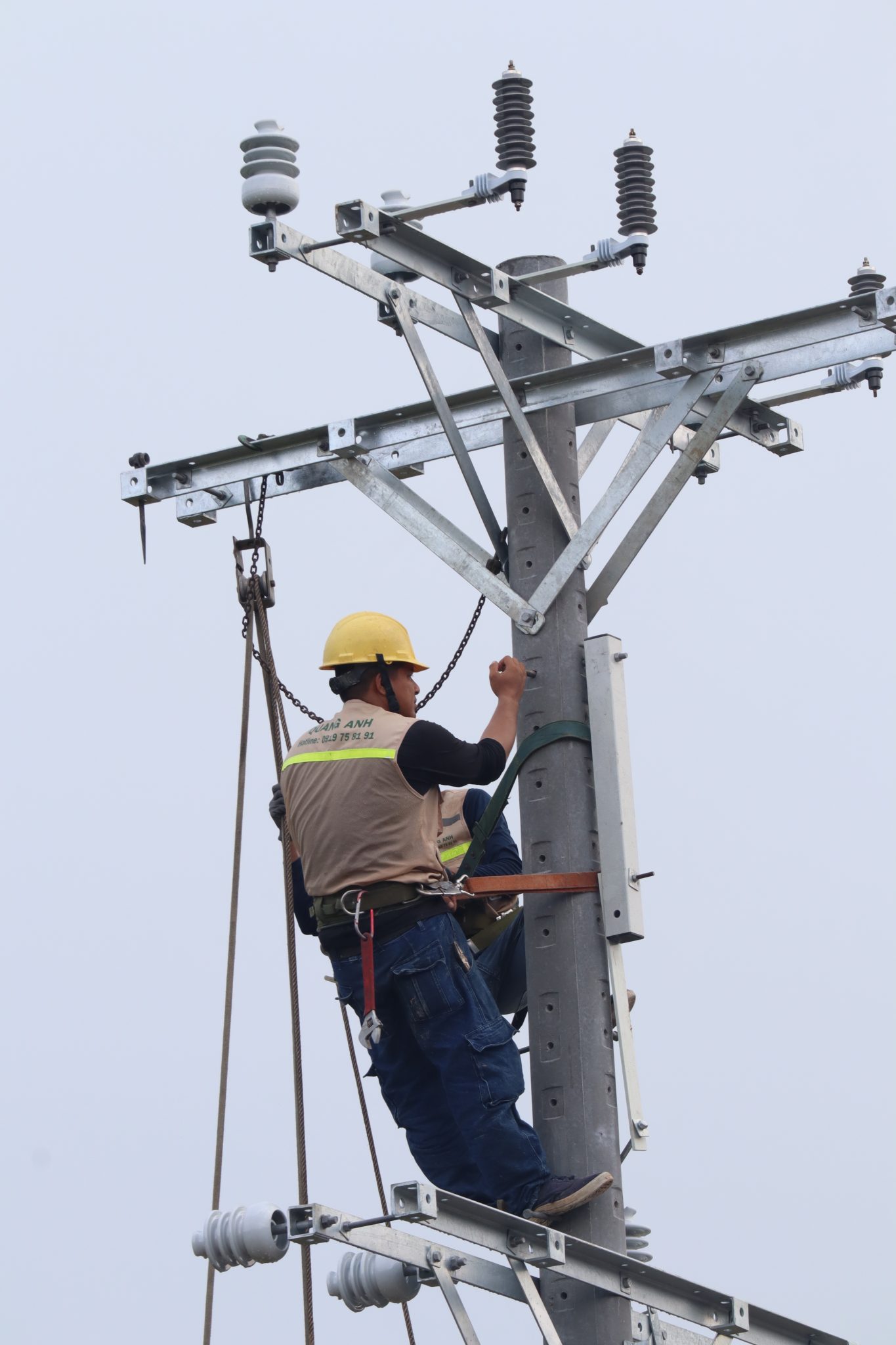
HVAC installation services for factories not only ensure an optimal working environment but also boost energy efficiency, reduce costs, and extend equipment lifespan. It is a strategic investment for the stability and sustainable development of the factory.
Contact QuangAnhcons via Hotline: +84 9 1975 8191 for the most optimal HVAC solutions tailored for your factory.
QuangAnhcons offers HVAC installation services with intelligent design and technology, ensuring high performance and energy savings, along with professional maintenance to sustain long-term stability.
[contact-form-7 id="7239967" title="Contact form 1"]

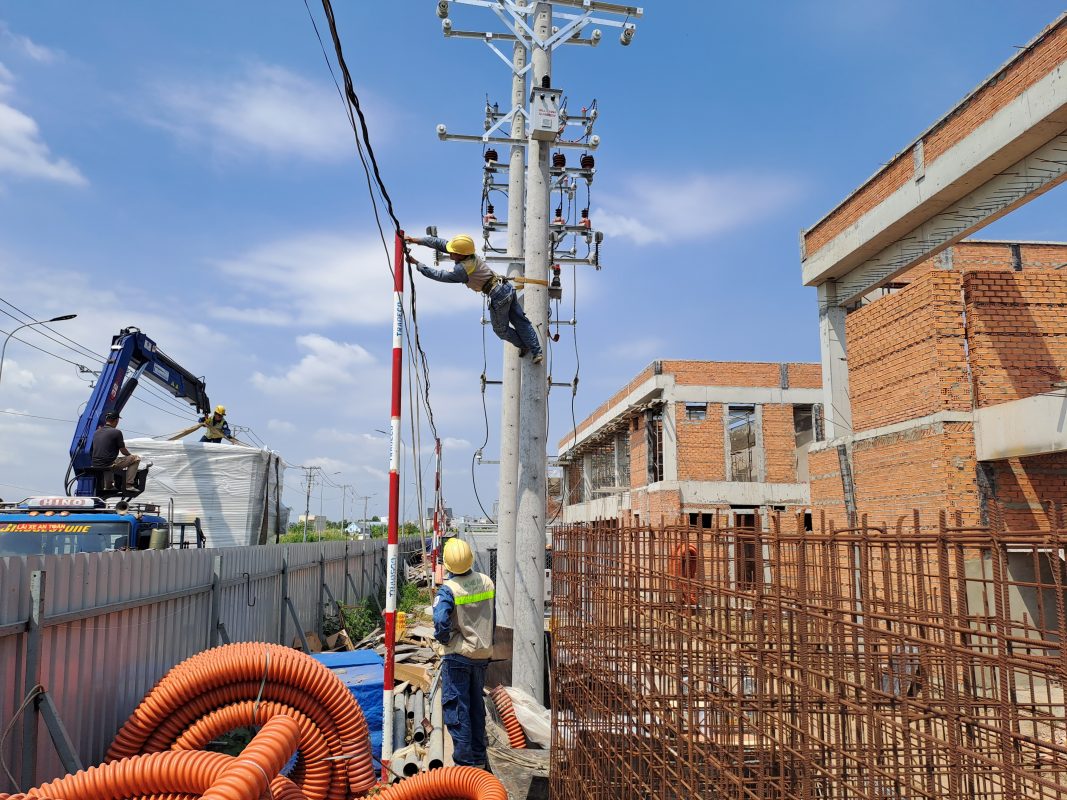
Related Posts
Tay Ninh Solar Power Planning: Technical Framework, Grid Interconnection, and Rollout Roadmap
Technical overview of solar planning in Tay Ninh: irradiation, grid capacity, permitting, design, operations, and [...]
Dec
Binh Duong Solar Planning: Regulatory Framework, Grid Interconnection, and an Implementation Roadmap for Factories and Industrial Parks
An overview of Binh Duong solar planning: legal framework, interconnection, design, risk management, and an [...]
Dec
Solar Farm Repair: O&M Workflow, IV Curve Diagnostics, Thermography, Inverter Service and Utility-Scale Safety
A utility-scale solar farm repair plan centered on O&M, IV curves, thermal imaging, inverter service, [...]
Dec
Dong Nai Solar Power Plan 2023–2025: Tri An 1,029 MW, Grid Upgrades and the DPPA Pathway
A complete look at Dong Nai’s solar power plan: Tri An 1,029 MW, irradiation potential, [...]
Nov
Quang Ngai Solar Power Plan 2024–2030: Legal Framework, Irradiance Potential, and Development Roadmap
A complete look at Quang Ngai’s solar power plan: capacity targets, irradiance (PVout), development zones, [...]
Nov
Solar Damage Assessment Services: On-Site Procedures, EL/IV/Thermography Testing & Compliance with Standards
Discover IEC/UL/NEC standard solar damage assessment processes: on-site evaluation, EL and IV curve testing, thermal [...]
Nov
Comprehensive Package Estimate for a 1800MVA 500kV Substation: Scope, Configuration 3x600MVA, Standards and Timeline Management
An overview of the 1800MVA 500kV substation estimate: construction scope, configuration 3x600MVA, GIS/AIS, SCADA, standards, [...]
Nov
Factory Electrical Systems: Comprehensive Design and Implementation Guide
Discover the detailed and safe process of factory electrical systems design and implementation. [...]
Oct
Blueprints Required for Factory Construction Permits
Discover the necessary blueprints in factory construction permit applications, from floor plans to electrical and [...]
Oct
What Are the Requirements for a Factory Construction Permit? A Comprehensive Guide
Explore the documentation and steps needed to secure a factory construction permit for streamlined project [...]
Oct
Factory Construction Permit Procedures in Vietnam: Essential Guidelines and Documents
Learn the procedures for securing a factory construction permit in Vietnam, focusing on document preparation [...]
Oct
Key Steps in the Factory Construction Process
Discover the essential steps and requirements for building factories. [...]
Oct
Comprehensive Electrical Substation Solutions by Quanganhcons
Discover the cutting-edge electrical substation solutions offered by Quanganhcons for industrial applications. [...]
Oct
Investment Costs for a 1MWp Solar Power System and Influencing Factors
Explore the investment costs for a 1MWp solar power system in Vietnam and the influencing [...]
Sep
QuangAnhcons: Elevating Wind Energy Solutions
Explore QuangAnhcons' leadership in wind energy and renewable solutions in Vietnam. [...]
Sep
Electrical Contractor Strategies at Becamex Industrial Park
Discover the strategic advancements and partnerships of the electrical contractor at Becamex Industrial Park. [...]
Sep
Investment Insights for 1MW Wind Energy in Vietnam: Costs and Opportunities
Discover the detailed analysis of costs and opportunities for investing in 1MW wind energy projects [...]
Sep
Advanced Electrical Installation Solutions by QuangAnhcons
Explore advanced electrical installation solutions and modern technology with QuangAnhcons. [...]
Sep
Enhancing Industrial Electrical Services with Quanganhcons
Discover Quanganhcons' expertise in industrial electrical services, offering efficient and sustainable power systems. [...]
Sep
Comprehensive MEP Solutions by QuangAnhcons: From Design to Maintenance Excellence
Discover optimal MEP solutions with QuangAnhcons, dedicated to excellence from design through maintenance. [...]
Sep